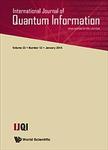版权所有:内蒙古大学图书馆 技术提供:维普资讯• 智图
内蒙古自治区呼和浩特市赛罕区大学西街235号 邮编: 010021

作者机构:Shenzhen Polytech Univ Sch Artificial Intelligence Shenzhen 518055 Guangdong Peoples R China Sage Hill Sch 20402 Newport Coast Dr Newport Beach CA USA
出 版 物:《INTERNATIONAL JOURNAL OF QUANTUM INFORMATION》 (Int. J. Quantumf.)
年 卷 期:2024年第22卷第7期
核心收录:
学科分类:07[理学] 070201[理学-理论物理] 0702[理学-物理学] 0812[工学-计算机科学与技术(可授工学、理学学位)]
基 金:Shenzhen Polytechnic Research Fund [6023310008K] Scientific Research Startup Fund for Shenzhen High-Caliber Personnel of Shenzhen Polytechnic [6021310026K] Supporting Project of National Natural Science Foundation of China [6022310037K] National Natural Science Foundation of China Characteristic Innovation Projects in Guangdong Provincial Universities [2022KTSCX308] Scientific Research Startup Fund for Shenzhen Science and Technology Program
主 题:Quantum machine learning variational quantum algorithms recurrent neural networks
摘 要:Recurrent neural networks are a kind of recursion which takes sequence data as input and carries on the evolution of temporal dependency data. Variational quantum algorithms use classical computers as the quantum optimizer to update the circuit parameters. In this work, we propose a variational quantum algorithm of the recurrent neural network, which we dub VQRNN, to find approximate optima in the time series forecasting. Motivated by the variational quantum algorithms, we train classical activation functions to assist quantum computing. Here, unlike the quantum tensor networks (QTN) algorithm that predicts a single output feature with a single time step, our algorithm can forecast multi-output features by adjusting the recurrent hidden state. Finally, we deploy the QTN and VQRNN algorithms on the Origin Quantum platform with the numerical simulator backends using the Meteorological data set. Experimental results show that the atmospheric pressure prediction accuracy of VQRNN is 99.8864% in multi-feature forecasting tasks. In addition, we conclude that the variation-based model has an excellent performance in multi-feature output forecasting.